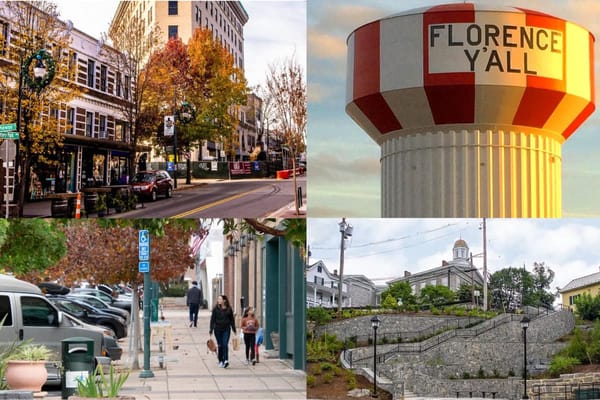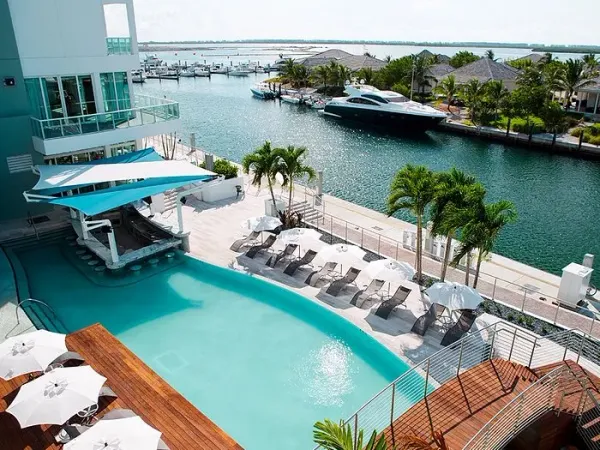Choosing your island: Hawaii vs. Maldives vs. Greece
Throughout history, islands have played roles disproportionate to their size. Crete fostered the Minoan civilization, Sicily mediated between Greece and Carthage, and Britain launched a global empire from its shores. Their separation by water created distinctive cultures, while their placement along trade routes made them centers of exchange.
Modern tourism reflects this duality. Travelers pursue islands not only for their natural isolation, but also for the cultural density born of centuries of contact and conflict.
That fascination shows up in a different form. People browse travel guides, watch videos, and type searches like which is the best island to go to in Hawaii—seeking clarity, comparison, and reassurance before they book. The conversation shifts from admiration of islands in general to weighing their differences in detail. What makes one stand apart from another? Which delivers the experience a traveler really wants? That is where history meets the modern traveler’s choice.
Hawaii
Hawaii is often the first stop in the island debate, and for good reason. Long before it became the 50th state of the United States, the islands were home to Polynesian voyagers who navigated thousands of miles of open ocean by stars, winds, and currents. They built a society that thrived in isolation, developing traditions, language, and governance unique to these volcanic peaks rising from the sea. In the 18th and 19th centuries, Hawaii became a global crossroads—first for explorers like Captain Cook, then for whalers, missionaries, and eventually sugar planters who drew workers from across Asia.
This layered history shaped each island differently: Oahu as the political hub, Maui as a cultural and agricultural center, the Big Island as the seat of volcanic power, and Kauai as a place of resistance and resilience.
Oahu
There’s a reason Oahu has long been the setting for honeymoons and love stories. The island has a way of weaving romance into everyday moments, making even the simplest experiences feel unforgettable. Imagine strolling hand in hand along Waikiki’s golden sand as the sun paints the horizon in shades of pink and gold. Later, as the city lights begin to sparkle, you might find yourselves at Tantalus Lookout, where Honolulu stretches out like a sea of stars against the night sky.
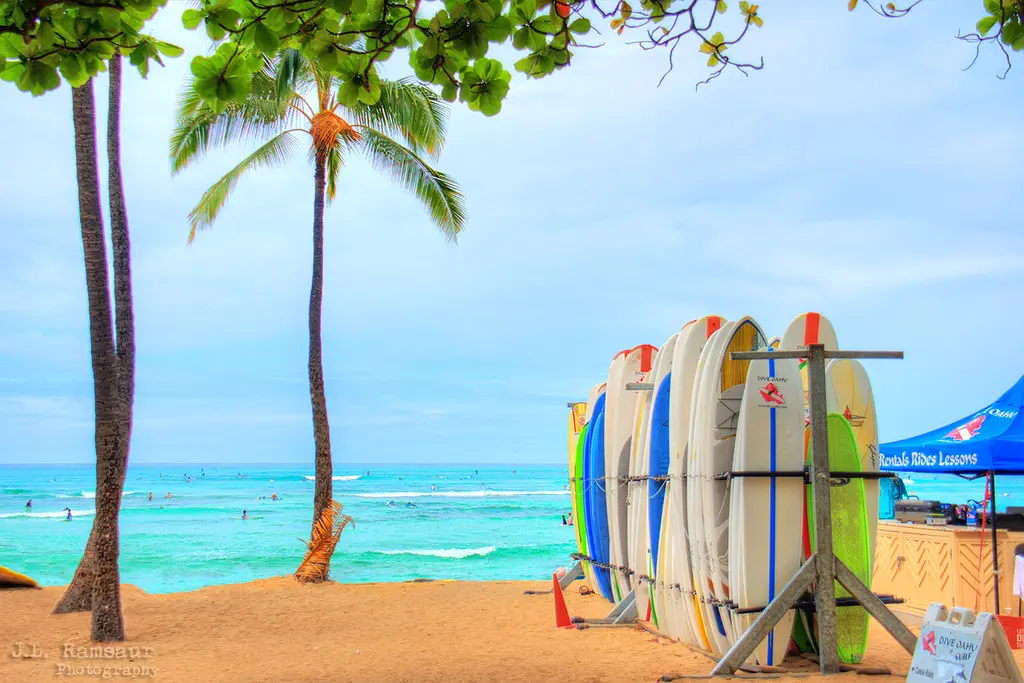
But Oahu’s magic isn’t only about views—it’s about shared discovery. Couples can explore lush botanical gardens, hike to hidden waterfalls in the island’s green valleys, or wander through charming surf towns on the North Shore. Scenic drives wind past dramatic coastlines and turquoise waters, offering endless places to stop and savor the moment.
With its soft evenings, fragrant plumeria, and ocean horizons that seem to go on forever, Oahu feels designed for connection. Whether it’s a first getaway or a milestone anniversary, the island creates a backdrop where romance doesn’t just happen—it becomes part of the story you take home.
Maui
Scroll through Instagram or TikTok, and Maui’s highlights pop up again and again—#RoadToHana, #HaleakalaSunrise, and #MolokiniSnorkel dominate the feed. Visitors gush about watching dawn from above the clouds, waterfalls pouring beside winding roads, and sea turtles gliding past while snorkeling. Social chatter paints Maui as the island of jaw-dropping views and “I can’t believe this is real” moments. This is why so many choose Maui: it looks as good in your feed as it feels in real life.

But beyond the photos, Maui is known for its balance. Families appreciate the calm beaches of Wailea and Kaanapali, while couples book luxury resorts that blend pampering with island culture. Adventure seekers take the winding drive to Hana, hike bamboo forests, or watch humpback whales breaching offshore in winter. The island combines comfort and spectacle, which is why it’s often called the “Valley Isle” — wide, welcoming, and endlessly varied.
So when people ask which island is best in Hawaii, Maui’s answer is simple: if you want a little bit of everything—beaches, adventure, luxury, and landscapes that stop conversations—this is where to find it. Maui isn’t just a destination; it’s a full portfolio of Hawaii’s greatest hits, tied together with the ease of one island.
Big Island
The Big Island earns its name—it’s larger than all the other Hawaiian islands combined. That scale reshapes the way people travel here. Distances matter: driving from Kona on the dry west coast to Hilo on the lush east can take several hours, and along the way the scenery flips like chapters in a book. You cross lava fields that look like the moon, pass cattle ranches that feel more like Texas, and wind into rainforests dripping with waterfalls. The journey is part of the experience, and the size ensures no two days look the same.
What pulls people in are the extremes. This is the island where you can hike across still-warm lava at Hawai‘i Volcanoes National Park, then stargaze at nearly 14,000 feet on Mauna Kea the same night. Black-sand beaches, manta-ray night dives, Kona coffee tastings, and ranchland horseback rides all coexist here. The Big Island isn’t curated like Maui or compact like Oahu—it’s raw, vast, and endlessly varied.
Kauai
Kauai feels different the moment you arrive. It’s the oldest of the Hawaiian islands and the least developed of the four main ones, which gives it a rugged, almost untouched character. Known as the “Garden Isle,” its cliffs, canyons, and rainforests make it feel more like a living wilderness than a tourist hub. Unlike Oahu or Maui, where resort zones dominate, much of Kauai is wild land—you can’t even drive all the way around the island because sheer cliffs cut off the road. That sense of remoteness is part of its charm.
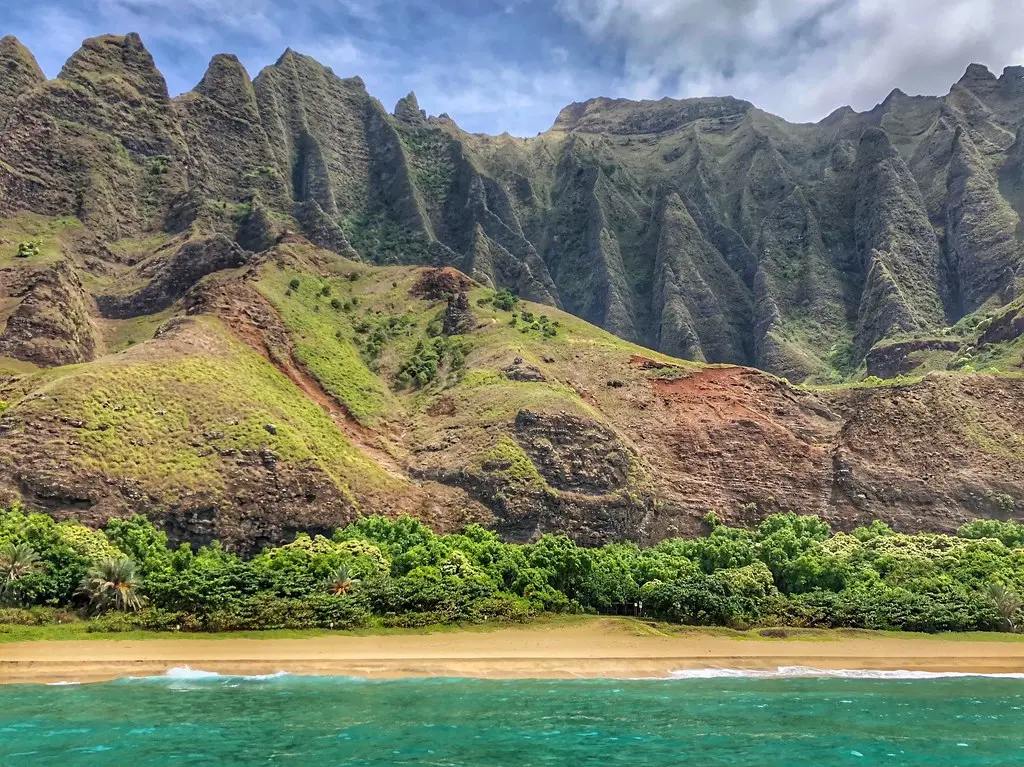
History buffs will remember Kauai as the last of the Hawaiian islands to join King Kamehameha I’s unified kingdom in the early 1800s, after years of resisting conquest. That independent streak still colors its identity—Kauai feels quieter, more self-contained, less commercialized. Sugar plantations once dominated the economy, but today, tourism and agriculture (especially taro and coffee) are central. Culturally, Kauai shares in Hawaiian traditions of hula, music, and storytelling, while local communities maintain strong ties to the land and ocean.
People come here for scenery that borders on the cinematic. The Nā Pali Coast rises in sheer green walls above the ocean, Waimea Canyon slices deep into the earth with red and orange ridges, and countless waterfalls tumble down in the island’s interior. Hiking, kayaking, and helicopter tours are the ways to see it, because roads only get you so far. Kauai is also less crowded, which means beaches and trails often feel quieter, more personal.
Maldives
The Maldives has probably drifted across your social media feed—turquoise lagoons, overwater villas, and hammocks swinging between palm trees. It looks unreal, like the backdrop to a dream. But behind the glossy photos is a real country, with history, culture, and experiences that stretch far beyond the picture-perfect frame. If you’ve only seen the Maldives through Instagram, here’s what you should know before you decide to go.
The Maldives isn’t one island—it’s a nation of 1,190 coral islands spread across 26 atolls in the Indian Ocean. Of those, only about 200 are inhabited, and roughly 170 are dedicated to resorts. The entire country stretches over 500 miles north to south, yet its total land area is tiny—just 115 square miles. It’s also the lowest-lying nation in the world, averaging only 4 feet above sea level. That fragility is part of what makes it so unique: here, land and water are inseparably entwined.
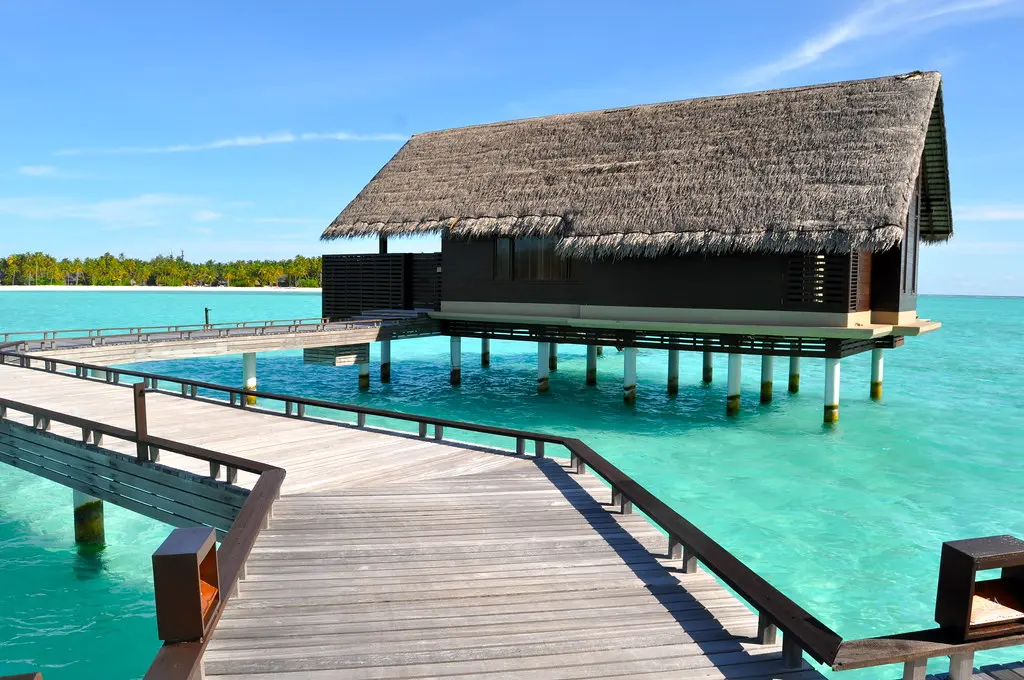
For centuries, these islands were a stopover for Indian Ocean traders. Arab, African, and South Asian influences blended into a culture that still pulses today. Islam has been the state religion since 1153, shaping the rhythm of life and visible in the many mosques of Malé, the bustling capital. Walk through its markets and you’ll find fresh tuna, coconuts, and fragrant curries—flavors that define Maldivian cuisine.
Most visitors don't ask about where to stay in the Maldives. They have dreamt of those overwater bungalows that seem to float above lagoons. And yes, that’s very real—many resorts occupy their own islands, offering privacy and quiet you can’t find elsewhere.
Greece
For thousands of years, the islands of Greece have been both stepping stones and destinations in their own right. In antiquity, they were the lifeblood of trade and myth: Crete fostered the Minoan civilization, Santorini may have inspired Plato’s tale of Atlantis, and Rhodes became a maritime power crowned by its legendary Colossus. These islands were not isolated—they were crossroads where cultures from Asia, Africa, and Europe met, clashed, and mingled. Through the Byzantine era and Ottoman rule, they carried the weight of empire, religion, and resistance, each island’s identity shaped by geography as much as by politics.
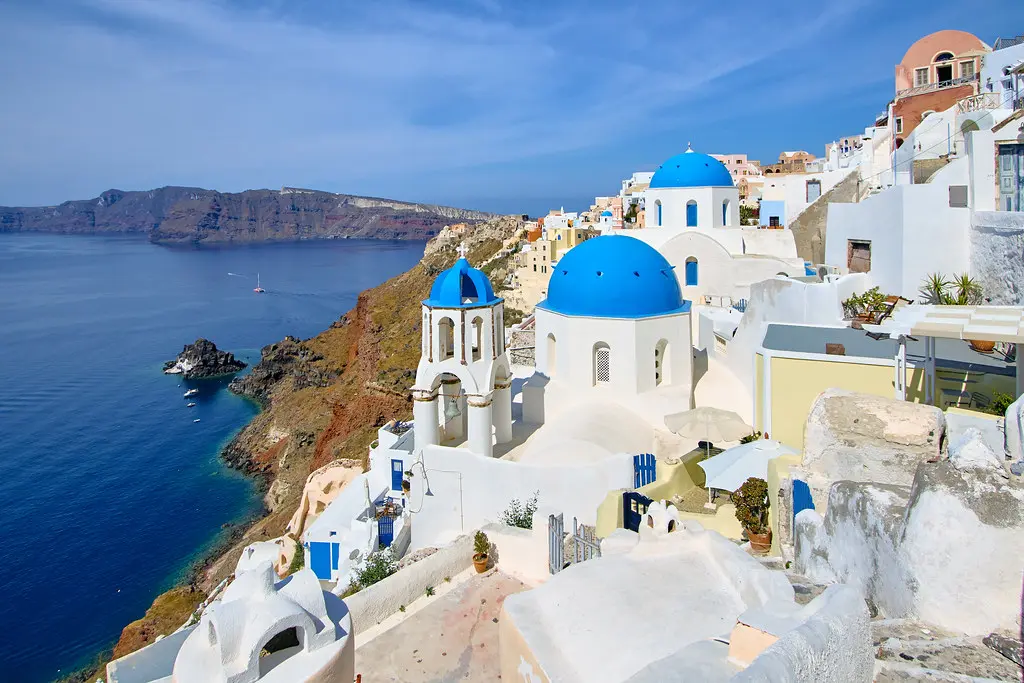
Greece sits at the edge of Europe, with one foot in Asia and another in Africa. It has around 6,000 islands and islets, though only about 200 are inhabited, and boasts over 8,000 miles of coastline. Summers are hot and dry, winters are mild, and mountains cut dramatically into the land. Athens—the capital—is home to nearly a third of the country’s 10.5 million people, and acts as the gateway to both mainland treasures and island escapes.
Travelers often split Greece into two: the mainland and the islands. The mainland offers Athens’ ruins, the cliffside monasteries of Meteora, and the echoes of ancient oracles at Delphi. The islands, meanwhile, fall into distinct families. The Cyclades (Santorini, Mykonos, Naxos) shine with iconic blue-and-white architecture. The Ionian Islands (Corfu, Zakynthos) bring Venetian history and emerald seas. The Dodecanese (Rhodes, Kos) reflect centuries of trading empires. And Crete, the largest, mixes rugged mountains, fertile valleys, and legendary myths.
For travelers planning a late-summer escape, this variety sparks the familiar question: which is the best Greek island in September? The answer depends on your style—whether you’re drawn to Santorini’s sunsets, Crete’s depth and size, or the quieter beaches of Naxos and Rhodes, each island group offers its own perfect version of autumn in Greece.
Comparison: Hawaii vs Maldives vs Greece
| Criteria | Maldives | Hawaii | Greece |
|---|---|---|---|
| Affordability | High-end luxury, some budget guesthouses | Expensive, especially flights & hotels | Generally affordable, wide range of options |
| Number of Visitors (annual) | ~1.7 million | ~10 million | ~33 million |
| Best Time to Visit | Nov – Apr (dry season) | Year-round, varies by island | May – Oct for affordability, Sept for ideal balance |
| Accessibility | Single international airport in Malé, seaplane transfers | Direct flights from U.S. & Asia-Pacific | Multiple international airports across islands |
| Island Variety | 1,000+ islands, mostly resort-based | 4 main islands, each distinct | 200+ inhabited islands, diverse cultures |
| Culture & History | Islamic heritage, trading crossroads | Polynesian culture, U.S. history | Ancient ruins, Byzantine & Ottoman legacy |
| Natural Scenery | Turquoise lagoons, coral reefs | Volcanoes, lush rainforests, beaches | Dramatic cliffs, olive groves, beaches |
| Adventure Activities | Diving, snorkeling, sailing | Surfing, hiking, volcano trekking | Hiking, sailing, cultural tours |
| Food & Cuisine | Seafood, coconut, curries | Fusion of Polynesian & American | Mediterranean diet, globally praised |
| Romantic Appeal | Top global honeymoon destination | Popular for honeymoons, scenic resorts | Romantic spots like Santorini & Mykonos |
| Family-Friendliness | Resort kids’ clubs, calm lagoons | Wide range of family activities | Beach towns & cultural activities |
| Uniqueness | Private-island resorts, overwater villas | Volcanoes, U.S. & Polynesian mix | Blend of history, culture, and scenery |
Conclusion
Choosing between the Maldives, Hawaii, and Greece isn’t about finding a single winner—it’s about matching the destination to the kind of experience you want. The Maldives excels in romance and luxury, where private villas and turquoise lagoons create a once-in-a-lifetime escape. Hawaii is unmatched for adventure, with its mix of volcano hikes, world-class surfing, and family-friendly culture. Greece, with its deep history and diversity, offers the most balance: affordability, culture, and natural beauty wrapped into one.
All three deliver paradise in different forms. The best choice is the one that aligns with your travel story—whether that’s diving into reefs, chasing sunsets on volcanic cliffs, or walking through ruins that have stood for millennia.
FAQ
1. Are all Maldivian islands just resorts, or do locals live there too?
Most islands are either local or resort islands. Around 200 are inhabited by Maldivians, with towns, schools, and shops. Resorts occupy their own islands, designed exclusively for tourism. Travelers can choose between luxury resorts with private villas or staying in guesthouses on local islands for a more authentic and affordable experience.
2. What’s the best time to visit, given the weather?
The Maldives has two main seasons: dry (Nov–Apr) and wet (May–Oct). The dry season is ideal—sunny days, calmer seas, and excellent diving conditions. The wet season brings more rain and humidity, but also fewer crowds and lower prices. Even during monsoon months, rain usually comes in short bursts rather than lasting all day.
3. Do I need to rent a car in Hawaii?
Yes, in most cases. Public transport is limited outside Honolulu, and ride shares can get expensive for longer trips. Renting a car lets you explore beaches, volcanoes, and scenic drives at your own pace. On Oahu, you may get by without one in Honolulu, but for islands like Maui or the Big Island, a car is essential to see the highlights.
4. Is stargazing at Mauna Kea worth it, even with a full moon?
Absolutely. The altitude and clear skies make Mauna Kea one of the best stargazing spots on Earth. A full moon does reduce the visibility of faint stars, but you’ll still see planets, constellations, and the dramatic lunar landscape. Guided tours often provide telescopes and expert commentary, making the experience memorable regardless of moon phase.
5. How do I island hop in Greece: ferries or flights?
Both work, but ferries are the classic choice. They’re frequent between major islands, affordable, and offer scenic sea views. Flights are faster for longer distances (like Athens to Crete or Rhodes), but more expensive. Many travelers mix both: ferries for shorter hops in the Cyclades, flights for longer routes. Always book in advance during the summer.
6. What’s the best way to get around once on the islands?
It depends on the island. On smaller islands like Santorini or Mykonos, buses and scooters work well. Larger islands like Crete or Rhodes are best explored with a rental car—you’ll reach beaches, villages, and ruins that public transport doesn’t cover. Taxis exist but can be costly over long distances, so most travelers opt for independent transport.




